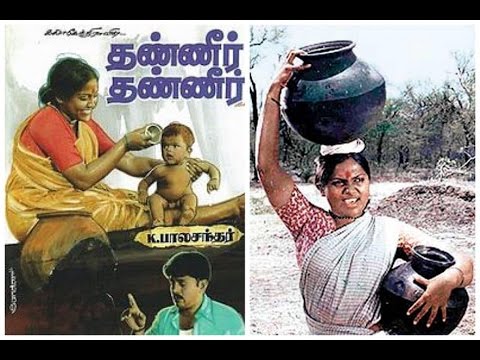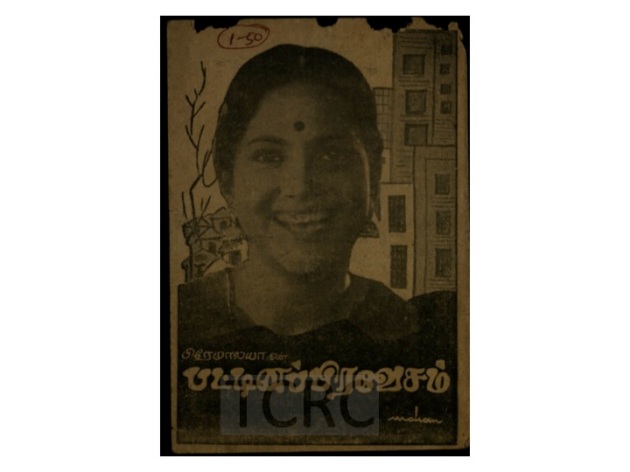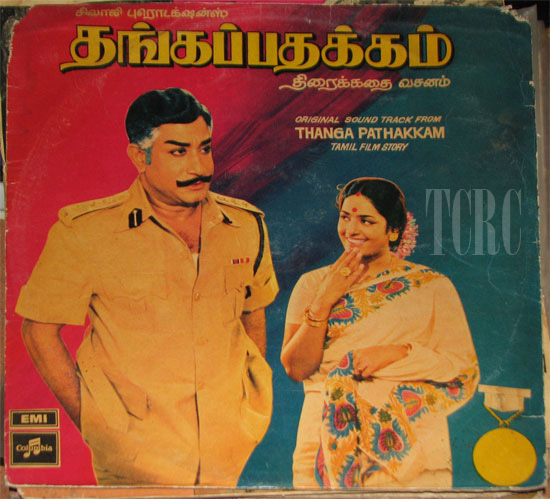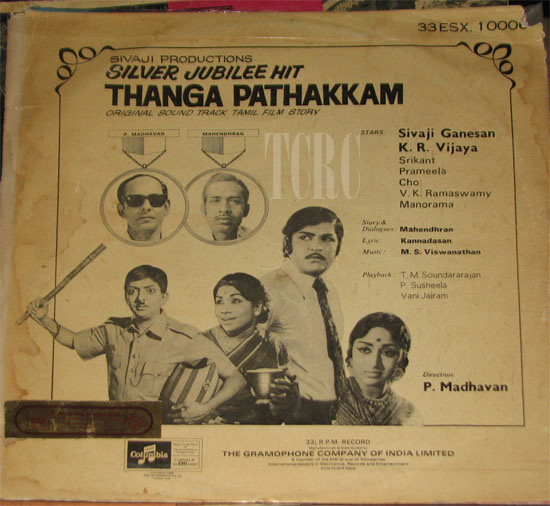By Sugeeth Krishnamoorthy
The late 1800s saw a cultural renaissance in what is Tamil Nadu today. Several art forms, including traditional dances and performing arts like Sathir, Poi Kaal Kuthirai, Thol Paavai Koothu, Bommalatam, and so on, saw a revival, that was not just culturally driven but also strongly driven by the nationalistic movement. Legends like U.V. Swaminatha Iyer discovered and published literature that sought to explain the culture, history and life of the ancient Tamils.
The origins of modern theatre began in the second half of the 19th century. Its success can largely be attributed to two doyens: Sankaradas Swamigal and Pammal Sammanda Mudaliar. These two dramatists strongly defined theatre, as it would be, in the years to come.
While most of early theatre was based on puranic themes, several of the plays Mudaliar was involved in writing had modern themes adapted or inspired from English plays or based on contemporary social commentary. Several of Mudaliar’s works like ‘Sabapathy’, ‘Manohara’, ‘NallaThangal’, ‘Yayati’ and ‘Dasi Penn’ were adapted to film formats. There were also nationalist’ plays attempted to be made into film, like Inbasagaran[1], based on Kovai Ayyamuthu’s stage play of the same name. The early actors of the Tamil talkies were also sourced from stage[2], as they had the ability to sing and thereby influence the audience through their melodious voice, although the initial acting during the first decade of Tamil cinema, was, at times, very rough and crude. The oldest surviving film today, is Pavalakkodi[3], which D.V.Balakrishnan, says was a filmed version of a stage drama.
‘Free India’ was reeling under immense poverty. This became a hot-bed for intellectuals and writers, who inspired by communist principles sought expression through literature and film. Subsequently, several films in the 60s, 70s and early 80s were made that were based on interlinking themes of unemployment, poverty and communist ideology.
Thanneer….. Thanneer is one such story. This story, penned by Komal Swaminathan,resulted from a discussion among a group of intellectuals in the late 70s, on what could possibly become a defining ‘Tamil stage drama’ in a global arena[4]. Interestingly, the writer rated this work as his best. The play, is based on the characters who live in a remote village, and their daily struggle to fetch water— a basic commodity, that eludes them.
It is their trials and tribulations that form the story. Using water as a metaphor, Swaminathan has woven a tale about the social injustices faced by marginalized sections of society. The writer challenges these inequities by asking, for instance, why villagers are allowed a ration of only 1kg of sugar, whereas urbanites are permitted 5kgs. More over, being denied the basic necessities of life existence like Water, The writer also, at various points in the story, points out how the ‘communist party’ targeted these groups, winning their allegiance through their overt challenges of authority using tools such as ‘unions’ and ‘boycotts’. The author also makes references, sarcastically at times, to the impending “River Integration” schemes’ and the presence of Seemai Karuvelam marams’ surrounding the village. For a state that has no natural river springs and that is dependent on three rivers from neighbouring states, these issues are only too relevant even today.
Another aspect that the writer brings in vote-bank politics. This divisive strategy used by politicians is as if not more relevant today as it was then. The writer speaks of the plight of these groups of people, exploited by politicians and left high and dry after they come to power.
When Vellaisamy, a nomad with a murky past, comes across this tiny village and its people reeling from drought, he tells the villagers, “If the State and the Administration will not help you, then you must take things into your own hands.” He leads the villagers and is yet one among them, helping them launch a campaign to regain their rightful claim to that vital fluid, water. And when all seems lost, he provides the villagers, hope and the courage, to do the unthinkable—build a canal; break the hills and divert the water towards the village[5]. When the villagers attempt to do this, the State opposes, puts an end to an undertaking that will alleviate the suffering of the villagers, instead declaring it unlawful. What follows is the climax of this play.
Although the play seems most obviously influenced communist ideals, it is easy to see past it objectively to the dominant and apolitical issue of human rights violation. It makes one wonder what crime the poor villages committed to be denied, even the most basic necessities? The author concludes, adopting a communist stance that if these things continued to happen, social revolution will be inevitable.

K.Balachander, made this play into a movie with the same name -— “Thanneer…Thanneer’. Keeping the basic structure of the play intact, Balachander has made a few changes that have added value to the film. In stark contrast to other Kollywood directors of his time, K. Balachander was known to give a lot of importance and ‘central’ roles to his female leads. In this story, there is only one female character, Sevanthi. Balachander has altered her role significantly, to make her the mother of a new born, who is spending her early motherhood at the place of her birth. This enables Sevanthi[6] to be in the village ‘Athipatti’, the place where the story takes place, and thereby play a central role in the film.
At various points in the original play, one can observe a generational difference in thinking between the older men, who prefer being subservient to their boss and the younger rebellious group, lead by Goval. By introducing a female character, Sevulli, at the ‘cheri’, and creating a love interest for Goval, K.B has also tried to raise issues about caste-based geographical segregation, which was and is quite common in rural India. By making Sevulli, a victim of paralysis, Goval’s love interest ,K.B brings the issue of ‘poisoned flouride well’, beside the cheri[7]into focus in a powerful way. Unlike in the movie, Swaminathan’s play does not dwell too much on this part of the story.
There are two other important characters in this film. Being the most educated person in the village, Vaidhyanathan, the school teacher represents the ‘experience of age’ and yet at the same time, has the power to command respect amongst the hasty youth. Originally a nomad, Vellaisamy, a run away convict, finds the village ‘Athipatti’ as his new home. He becomes one of the dynamic leaders of the village and offers solutions and plays a major role in the attempts of the villagers to bring water to them. His presence in the village grows to a point where the villagers on coming to know of his past, offer to protect him rather than hand him to the police, inspite of a bounty on Vellaisamy’s head. Balachander has retained the essential elements of both these characters, right across the film.
Aligning with the theme of the film, K.B also introduces several dramatic elements that add more value to the story, as film is a visual medium. There are certain scenes—such as the one where the poosari tricks Sevanthi into fetching a pot of water, threatening to otherwise curse her; the man who opposes the village’s rules and enters the polling booth to drink as much water as he can; , the conversation between Sevanthi and the engineer who asks for water for his Jeep; and the one where the Nayakar in his thirst laps up the soda he brings with him in his vehicle—that are apt examples of the use of such elements to elevate the film.
Another invaluable aspect of this film is the music. Without wasting footage, several dialogues in the film, which were cut out at the editor’s table were, used in the title track, as audio fillers. There is also the clever use of silence to convey climactic emotion — such as when the rain clouds betray the expectant village-folk ( with the camera panning on Sevanthi), when the womenfolk with their mud pots block the passage of the politician, and when a battalion of police face-off against the shocked village-folk at the site where the mountain is to be broken. The film makes good use of natural sounds like baby-cries, breaking of wood and wooden pots, among others. The short folk songs, which were there in the original play itself, keep with the tone and mood of the film.
The end climax sees a couple of major changes. In the play, the teacher ‘Vaidhyanathan’ continues to take classes for the children in the evening, but in the film version, he volunteers to go to jail claiming he was responsible for hiding Vellaisamy. Another surprising element is that, in the climax, Sevanthi removes her thaali’ and throws it at her husband Alagiri, who threatens her. She tells him to put it around his neck, along with the several medals that he is going to receive after arresting Vellaisamy. This scene would have invariably added more value to the ‘characterization’ of Sevanthi. It would have added weight to K.B’s portrayal of ‘the independent woman’, but alas this scene was omitted.
The death of Vellaisamy is tragic, yet poetic. The man who started things with a ‘hiccup’ and went on to attempt to save the village, thanks to Sevvanthi’s act of kindness, did not get any water when he was chased by the police and died of thirst. Goval, who was shown to have a rebellious streak,joined similar groups. And in an unresolved pre-climax, several people leave the village while those that chose to live behind, lived in hope.
The film ends with a montage shots:government officials engaged in water conservation programmes’ and ‘River integration’ discussions;. Nayakar going to the village and pleading with his caste members (the same ones who boycotted him earlier) for votes and. Sevanthi laughing to his face; and finally a paddy field covered with flags of political parties.
The writer of the play must have had tremendous foresight and politico-social insight if the dominant themes of the film continue to be relevant 35 years later. The film “Thanneer…Thanneer” does the play justice by staying true to its content and spirit while adapting it to the medium and the ethos in an evocative and sensitive manner. The movie is sure to leave you with a lump in your throat!
Watch the screening of this film at Ashvita Bistro on the 17th April at 7.30pm
Notes:
[1] Inbasagaran’ was made into a film, as well. Unfortunately, it met with a tragic fire accident just before release. The reels were lost and the film was never released. The film was produced by Mahalakshmi Studios, a film production company.
[2] Successful actors like M.K.Thiyagaraja Bhagavathar, S.D.Subbulakshmi, N.S.Krishnan, S.V.Sahasranamam all came from the stage.
[3] Pavalakkodi (1934) and Sathi Sulochana(1934) are the oldest surviving Tamil Films. Both of them have been preserved at the N.F.A.I
[4] Komal Swaminathan’s own words : ‘Thaneer.. Thaneer’ – Vanathi Pathipagam.
[5]Such an event has happened for real in our History. The Mulla Periyar dam was built to divert water from Upper Kerala to Lower South Tamilnadu, a century ago. Less than a tenth of the water has been diverted, yet this water which reaches Tamilnadu takes care of the drinking and irrigation needs of 6 districts in Tamilnadu. The Dam was built by a British man, John Penny Cuik, who is revered in Theni District.
[6]In the original play, Sevanthi is married off to a policeman, Alagiri and leaves the village after marriage. She returns for Aadi, and plays a prominent role in the climax. She does not have any children in the play.
[7]The play tells us that the people of Athipatti did not use the water of the cheri, because the well was poisoned. Alternatively, we may speculate that they refused to do so, also because of caste- based differences. However, there is a scene in which Goval and his friend, drink water from this ‘fluoride well’ due to unbearable thirst, as no water sources existed in the vicinity.






